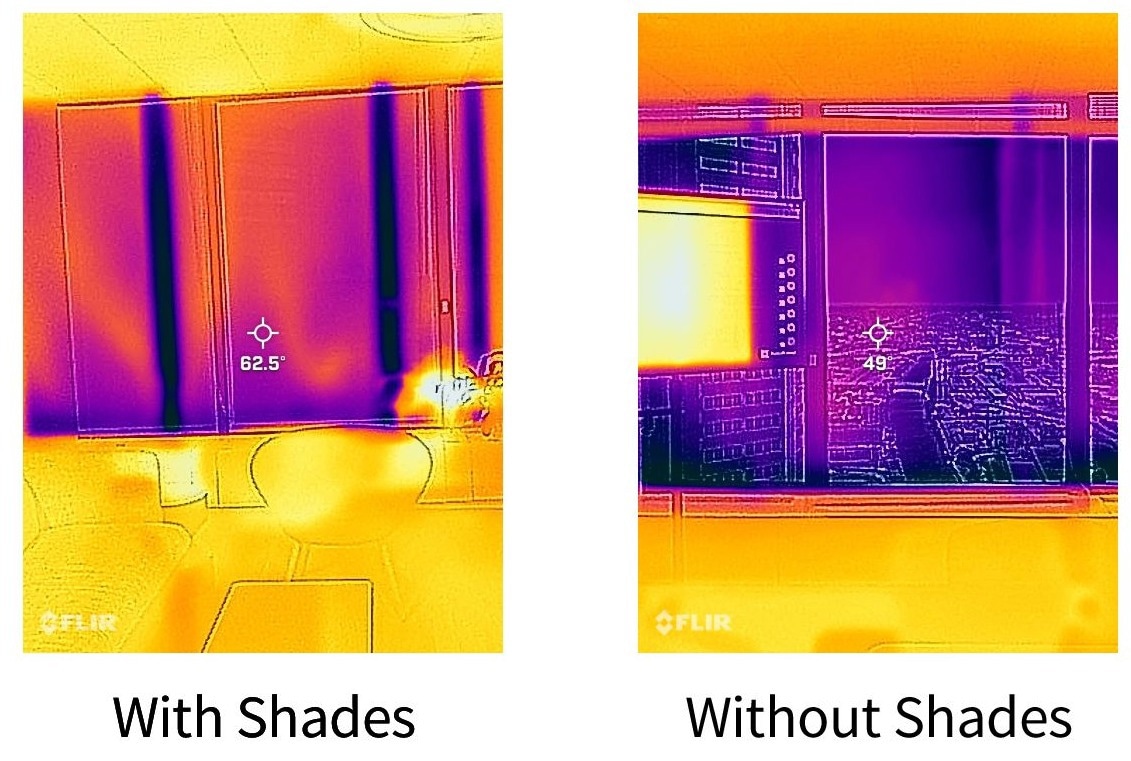According to a landmark study done at Willis Tower by Illinois Institute of Technology researchers, automated insulating window coverings can reduce energy usage by one-quarter and may repay installation costs within three to five years. The ComEd-funded study demonstrates a possible path toward sustainability and energy efficiency in architectural design.
 Infrared image showing the temperature of the window with (left) and without (right) insulating shades. Image Credit: Illinois Institute of Technology.
Infrared image showing the temperature of the window with (left) and without (right) insulating shades. Image Credit: Illinois Institute of Technology.
In climates similar to Chicago, temperature regulation accounts for 30-40% of the energy required by buildings. Mohammad Heidarinejad, Assistant Professor of Architectural Engineering, headed the study team that focused on the importance of window shades, which are frequently disregarded in energy-saving solutions. The findings demonstrate how, when connected to an automated control system, insulating window blinds can significantly cut energy usage throughout both heating and cooling seasons.
According to Heidarinejad, mitigating energy waste in existing buildings is a serious issue.
If you’re designing a new building, you have a lot of freedom to look at new technologies that save on energy consumption, but for existing buildings, you have limited options.
Mohammad Heidarinejad, Assistant Professor, Architectural Engineering, Illinois Institute of Technology
The research was carried out in partnership with Parata Solutions LLC and Amatis Controls over a ten-month period at the Equity Office in Willis Tower, a building with single-paned windows and a high window-to-wall ratio.
For Parata’s patented insulating shades, three control strategies were tested: entirely manual control, a predefined schedule, and a sensor-based system that took into account elements such as external conditions and room occupancy.
The results were outstanding, suggesting a 25% reduction in energy use during heating and cooling seasons when motorized shades were used. The positive response from office users was even more strong, with 80% preferring the new shades over the previous blinds.
Working with Mohammad Heidarinejad and his team at Illinois Institute of Technology was a game changer for our company. Their rigorous field measurements helped confirm the efficacy of our shade system to drastically reduce energy use while offering a solution that occupants and building owners prefer over the incumbent.
Christopher Nurre, CEO, Parata Solutions LLC
The research not only led to sustainable architecture solutions but also provided real-world learning opportunities for Illinois Tech students involved in the project. Heidarinejad emphasized the need for students to collaborate on real projects.
We had students doing instrumentation, data collection, and modeling, and their results were implemented in the actual build study. It was important for students to learn how to collaborate on a real project.
Mohammad Heidarinejad, Assistant Professor, Architectural Engineering, Illinois Institute of Technology
Additional research is designed to investigate the efficacy of these innovative window shades under varying environments, like in buildings that use natural gas, in different climates, or with windows facing different directions.
Brent Stephens, a co-principal investigator on the project and the Arthur W. Hill Endowed Chair in Sustainability, emphasized how this unique, immediately relevant study complements Illinois Tech’s purpose perfectly.
“In addition to the exciting findings of energy savings and payback period, this project served as a perfect example of the type of industry-relevant research we enjoy—combining field measurements and computer simulations to evaluate a unique strategy to save energy in one of the most famous buildings in the world,” Stephens concludes.